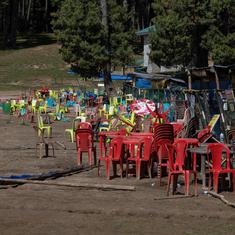Consequent to the decriminalisation of Section 377 by the Supreme Court in September 2018, a section of the LGBTQIA+ community in India has been demanding that the next logical step should be the legalisation of same-sex marriage.
This, they argue, will give the gay community the same privileges enjoyed by the heterosexual mainstream. It is thus in accordance with the principle of equality enshrined in the Constitution.
Non-negotiable requirement
The benefits of same-sex marriage are both emotional and financial. Married gay couples have all the securities provided by the family as an institution. They can have kids through surrogacy or adoption, can acquire joint housing and car loans, joint insurance policies, and can bequeath wealth to their partners after death, without having to resort to cumbersome litigation.
Same-sex marriage is also conducive to social acceptance by the heterosexual mainstream, comprising parents, relatives, friends, neighbours, employers and society at large. This is partly because married gay couples replicate heterosexual lifestyles, dismantling the stereotype of gay men, lesbians and transgenders as those who lead promiscuous lives that foreground sex.
We are thought to be incapable of committed relationships. Gay men, especially, are prone to the charge of anonymous sex in public places, which is also wrongly believed to be responsible for the spread of HIV and AIDS.
The Bharatiya Janata Party government’s rejection of same-sex marriage, however, is not because they are against homonormativity, which is the reason why a section of the LGBTQIA+ community disfavour same-sex marriage. Homonormativity derives from heteronormativity, with its non-negotiable requirement of monogamous sexual relationships within marriage, and it Is attendant ills of patriarchy, misogyny, sexism and toxic masculinity and femininity.
To the anti-gay marriage lobby, marriage is a right-wing institution that fosters capitalism through its emphasis on a money economy and private property. People often get married to fulfil a duty, rather than for reasons of love. This is especially true of India where arranged marriages are the rule, and marital alliances are between families rather than individuals, with factors like caste, class, education, religion and age playing a major role in one’s choice of partner, in which of course the individual has little or no agency.
At the end of the day, though, homonormativity may derive from heteronormativity, but can never substitute it, for heteronormativity, with its wholescale belief in cross-sex sexual attraction, is also heterosexist in nature. It is for this reason that radical queer identities distance themselves from homonormativity.
Sacrosanct institution
The BJP government’s rejection of same-sex marriage is, instead, identical to the Vatican’s rejection of it. The Vatican has fiercely resisted attempts to give its sanction to same-sex marriage. The Vatican believes that marriage can only be between a man and a woman, whose sexual union is procreative, for procreation is Nature’s reason for giving us sexuality in the first place.

To this way of thinking, marriage is a sacrosanct institution. Letting it pass into the hands of the “perverse” will only serve to defile the institution. One Pope thus went to the extent of saying that we had to save the world from homosexuality, just as we had to save our rain forests.
It is ironic that a government with a Hindu revivalist agenda should, in respect of same-sex marriage, toe the puritanical line of the Vatican, even as it opposes what it calls forced conversions to Christianity by missionary groups. In doing so, the Union government overlooks evidence to the contrary, which establishes the prevalence of non-heterosexual sexual practices in pre-colonial India. The evidence is present in texts such as the Kamasutra, in legends such as that of Shikandini, in the sculptures of Khajuraho, and even in contemporary festivals like the Kovagam festival held in Tamil Nadu in May every year.
Yet that is exactly what characterises the ruling dispensation. It is thinking seems to be more in conformity with the Supreme Court’s December 2013 judgement on the re-criminalisation of Section 377, after the Delhi High Court read the section down in July 2009, rather than with the Supreme Court’s September 2018 judgement in response to a curative petition.
In December 2013, the Supreme Court held that it was not for the courts to adjudicate on the legalisation of homosexuality. Instead, that had to be left to the government to amend the law through a parliamentary amendment if it thought fit.
Needless to say, the government would have brought about no such parliamentary amendment if it had a choice. It never expressed its pleasure at the Supreme Court’s September 2018 judgement, nor did it congratulate the LGBTQIA+ community on its victory, or apologise to us for the oppression we suffered for over a hundred years on account of an antiquated colonial law.
There were exceptions in the ruling party, of course, such as the late Arun Jaitley, who wanted the government or the judiciary to decide in favour of the gay community. Jaitley’s progressive views, however, were his own and did not reflect that of his party.
The reading down of Section 377 is thus an isolated incident, that shows no signs of being taken forward. On the contrary, my fear is that the clock might be turned back, with a larger bench than the five-judge Constitutional bench that decriminalised Section 377 criminalising it all over again, perhaps at the behest of the government. Rajya Sabha Member of Parliament Subramanian Swamy actually predicted this in an interview.
R Raj Rao is a writer and former professor of English at Pune University.










